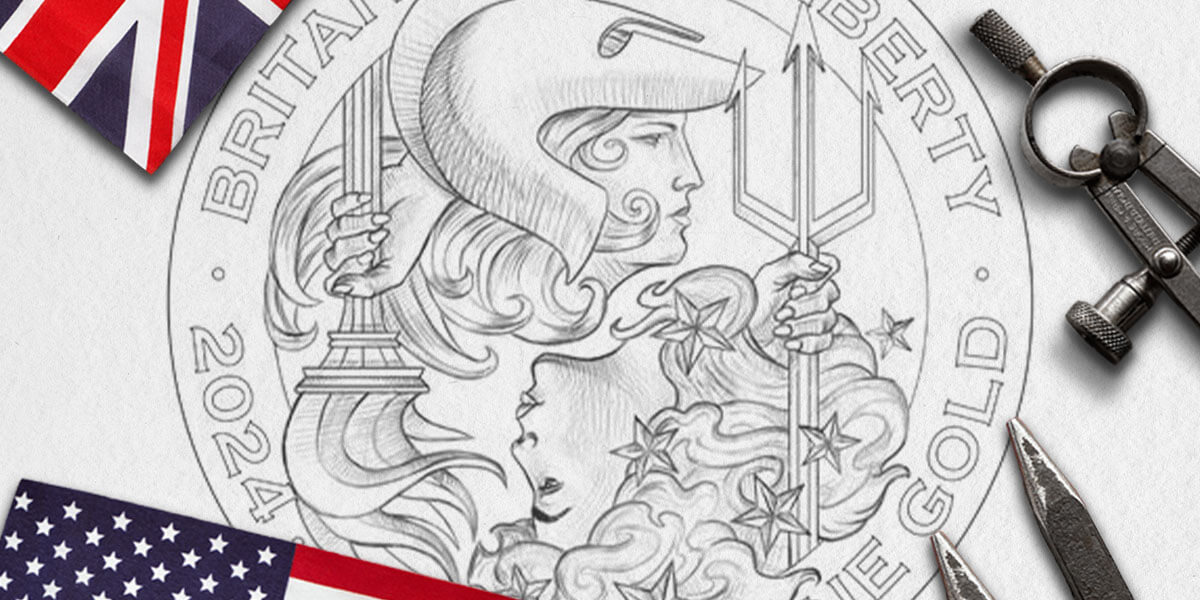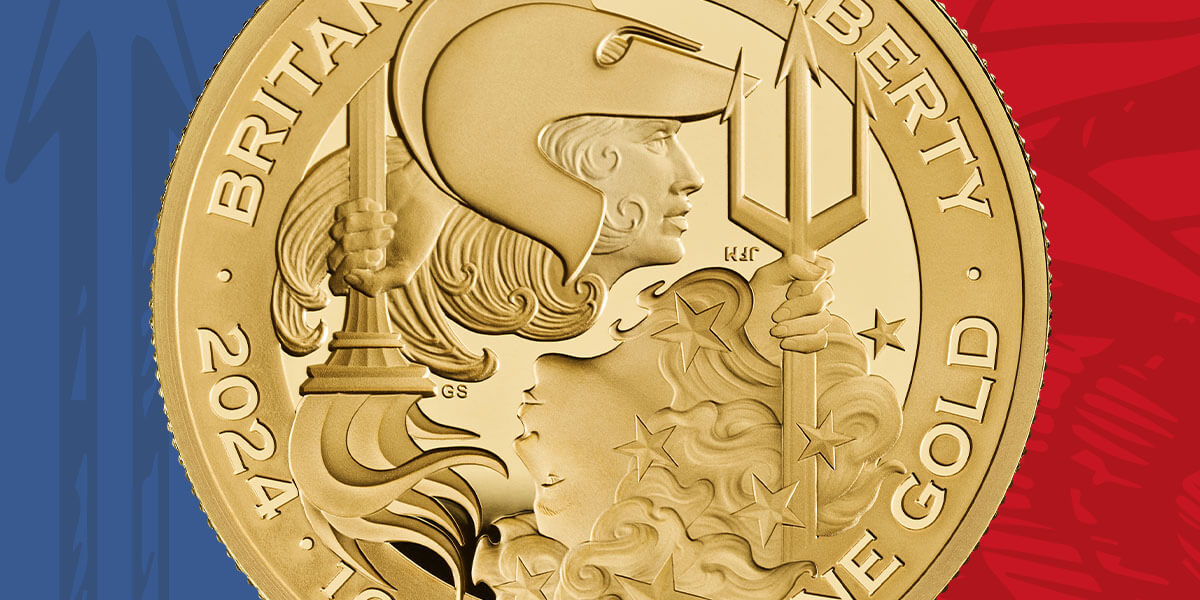Britannia and Liberty, the respective female personifications of the United Kingdom and the United States, have both featured on each nation’s coins
In an exclusive partnership between The Royal Mint and United States Mint, the chief engravers of both organisations have combined their technical and creative talents for the first time to create a binary coin design, where national symbols unite on the reverse of a coin, sharing equal prominence.
We spoke with Gordon Summers, Chief Engraver at The Royal Mint, and Joseph Menna, Chief Engraver at the US Mint, to gather their insight on the finished design and their creative process.

A Collaborative Approach
Despite working almost 3,500 miles apart, Gordon and Joseph embraced the advantages of modern technology and collaborated in a virtual capacity.
Gordon: “It was brilliant working with Jo – a really fantastic experience and something completely unique to me in that I often manage teams and guide designers and craftspeople in their work, but I’ve never worked with a peer in equal tandem on a project like this. I would say I come from more of a technical background whereas Jo is a fantastic artist, bursting with creativity.
“An initial challenge we faced was figuring out how we work together. We agreed it needed to be a collaboration in all aspects, combining our skills in an equal contribution.”
Joseph: “We held regular meetings over the internet where we shared screens and discussed our ideas. We came up with numerous designs, so it was then a collaborative effort on our part to decide what worked and what didn’t. It was a long-term process, one in which Gordon and I became good friends as a result.”
Conceptual Thinking
No creative endeavour is easy, with each posing its unique set of challenges. By combining the iconic figures of Britannia and Liberty together on a coin, the project presented with a set of parameters that required both chief engravers to come up with a shrewd solution.
Gordon: “We asked each other about these symbols and what they mean to our nations – what Liberty means to an American and what Britannia means to a British person. We then considered how do we represent both figures equally, so that one doesn’t overshadow or surpass the other. That’s where the concept of playing cards came into the equation.”
Joseph: “I think the interesting thing about coins is that they are tactile, sculptural objects. They invite participation in a way that other media channels do not, so the playing card concept for this coin really came to fruition in that regard.”

The Creative Process
Two chief engravers, at the peak of their professions and masters of their craft, could potentially clash when it comes to the creative process, whether through styles of working or opinions on design. This was far from the case as they combined and shared one another’s skillsets and expertise, which ultimately fed into the final design.
Gordon: “We went away and rapidly put together some sketches to find ways of presenting the figures on a coin. We whittled down the designs and presented these to the committees of each respective nation for them to select the most fitting design.”
Joseph: “In terms of the design process in general, Gordon and I shared ideas; we kept sending thumbnails back and forth and then had virtual meetings to discuss and critique one another’s work and ideas. Overall, I think it just developed very organically.”
Portraying Britannia
Despite his 30 years’ experience working at The Royal Mint, Gordon never had the opportunity to work on a Britannia coin until now. Despite this, there was no need for extensive research given his familiarity with the subject, which led to an interpretation underpinned by intuition. Britannia is portrayed in her purest form as a symbol of strength and resilience, as Gordon described:
“We designed Britannia’s hair in a wavy style, which was intentional to represent her historic connection with the sea, and we ensured she held her iconic trident. Another thing to note is the symmetry in the torch and trident, which unites the elements of fire and water, adding to the duality of the design.”

Representing Liberty
Joseph studied various depictions of Liberty but also that of Columbia, as Liberty wasn't really perceived as an embodiment of America until the arrival of the Statue of Liberty, which became embedded within the American public consciousness. Joseph explained how he has a personal, familial connection with the concept of Liberty that shaped his interpretation of the symbol.
“In terms of personifying Liberty, I actually think about it as a symbol of opportunity. Because that represents my grandparents and many others who came here on immigrant ships from Europe to join this great American tapestry. This modern interpretation gave me the opportunity to make the figure emblematic of America as a whole, which is why she isn’t of a specific ethnic origin.”
Many aspects of Joseph’s modern rendition of Liberty were intentional, as he explained:
“I wanted the stars to be free. Because, for me, you don’t want to bind or trap Liberty. The figure is a representation of freedom; therefore, I wanted the stars to be free whilst also alluding to the stars on the US flag. And then the torch is a subtle nod to the Statue of Liberty – the physical representation of the concept that most people are familiar with.”
The Finalised Design
This special numismatic partnership, where traditional skills blended with raw creative talent, resulted in a coin that serves as a beautiful representation of two proud nations. Britannia, with her Greco-Roman helmet and trident, watches over the sea as she guards Britain’s shores. Liberty clasps a torch as a beacon of light, freedom and opportunity, representing a founding principle upon which the American nation was built.
Be Inspired

BRITANNIA AND LIBERTY: UNIFYING NATIONAL ICONS
Discover National Icons